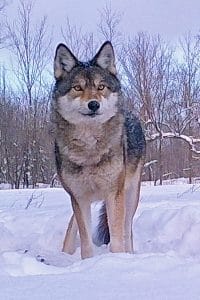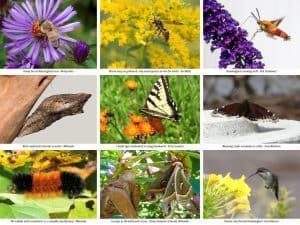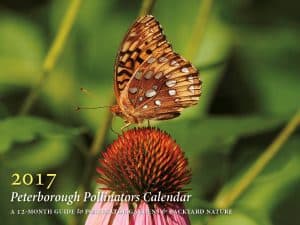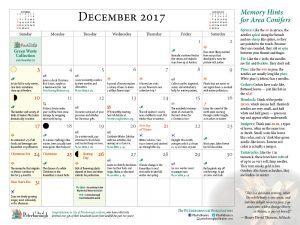“The woods are wide and full of wonders, but we boys were mere counters, nibblers and sniffers at her mysteries. Just two skinny lads roaming fields like foxes searching for whatever we could find. Here a quartz rock, there an emerald snake, and over there a woodcock’s nest.”
Local author Gord Harrison’s new book, ‘My Cousin & Me: And Other Animals’ is a powerful natural history memoir of two young lads chasing wildlife in the hinterlands of Haliburton County. Scattered throughout the pages are more than 350 of the author’s fabulous wildlife photos of everything from eastern wolves and snowy owls to Cecropia moths and orchids. Harrison’s heartfelt love for the land where he grew up and now calls home rings true on every page.
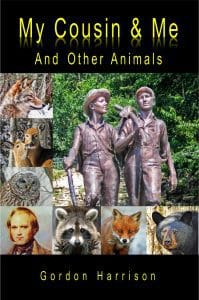
Gord Harrison’s new memoir evokes a Tom Sawyer and Huckleberry Finn childhood (Gord Harrison photo).jpg
Themes
“My Cousin & Me” is many things. First, it is a celebration of a childhood that few kids today will ever know – a Huckleberry Finn childhood, free of the shackles of over-protective parents. At the same time, the book is an invaluable guide to seeing nature through the lens of evolution by natural selection – “the single best idea anyone has ever had”, as the philosopher Daniel Dennett famously stated. Finally, “My Cousin and Me” is a tribute to the diversity and wonder of nature in central Ontario.
Enthralled by the glorious life all around him, Harrison came to realize that all of this beauty is the result of natural selection, namely the process whereby organisms better adapted to their environment tend to survive and produce more offspring. As Harrison explains in multiple, fascinating ways, predators and prey like flowers and bees ‘dance’ together in the struggle for existence. Each shapes the other.
In a chapter on white-tailed deer, the author demonstrates how nearly every characteristic of a deer has been molded by millions of years of “descent with modification”, as Darwin liked to call it. While humans would quickly and miserably perish in the conditions that deer must face, the latter “appear to have just walked out of a grooming salon.”
Harrison is a proud, unabashed non-believer; but he knows his Bible. He is especially critical of creationism which, in addition to simply being wrong, reduces the wonder of nature to “God did it. End of story”. Nor is he a fan of authority. He explains how blindly obeying the powers that be – parents, priests, politicians – can often lead to bad outcomes. “If all you know is to follow authority and imitate your parents, how do you judge novel situations? If a plague hits your region, you pray; the plague persists and millions die… However, science recognizes no authority but reality.” Thankfully, knowledge derived from science now saves countless millions every year. His mistrust in officialdom and ‘business as usual’ is also grounded in the sad reality that humans have treated the wilderness and its wildlife as the enemy to be subdued, killed, eaten or skinned. He adds, “It has been a long night’s journey into light, and we’re not there yet.”
Harrison’s book is not just for nature lovers, but will delight anyone who is curious about science and critical thinking. It will also resonate with readers who remember what it was like to grow up in rural Ontario in the 1940s and 50s. The author recounts the story of how is ill-natured, superstitious aunt suffered from goiter and actually believed in the healing power of snakes. She asked Gord and his cousin to go out and capture a snake long enough to “wrap around her neck twice”. Local wisdom affirmed that doing so would cause the goiter to shrivel up and disappear. Because the boys didn’t particularly care for their aunt, they decided to grant her wish by catching a garter snake for the job, knowing all too well that the foul-smelling musk the snake exudes would linger on her neck for days! And it did. The book is full of similar amusing anecdotes.

You’ll find an entertaining story of Barney, the black bear, in My Cousin & Me. (photo by Gord Harrison).jpg
I couldn’t help but be impressed by Harrison’s first-hand insights into animal behaviour and how ‘received knowledge’ is not always accurate or the whole picture. He tells the story of a female black bear leaving her 18-month old cub to fend for itself. Rather than aggressively driving the cub away as many books describe, Harrison observed how she commanded her obedient cub to stay in the middle of his field. She then shambled off into the forest only to return in 20 minutes to see her cub again. Then, once more, she left. “This coming and going repeated itself half a dozen times over a period of three hours. It had every appearance of a long, sad goodbye. Finally she left forever.”
Morality
As this story suggests, Harrison is convinced of the innate morality of animals – not something God-given but rather the result of natural selection. In other words, being ‘moral’ is beneficial to the survival of the species. In an amazing story charged with heart-breaking emotion, the author describes how he came to know a paraplegic mother bear – probably the victim of an encounter with a vehicle or a hunter’s bullet. Despite the pain of warn-away fur and exposed flesh, the bear literally dragged herself by her front legs in the service of her cubs. Harrison contacted to the Ministry of Natural Resources who told him that if the sow made it through to hibernation, the cubs would have a better chance of surviving the winter. Harrison decided to feed “Mother Courage” and her cubs and put the food outside his back window. He watched for several weeks as the cubs always arrived first, followed by their heroic mother dragging her bleeding backside out of the deep forest, only to collapse in exhaustion. He discovered that mother and cubs were travelling nearly a kilometre over arduous terrain from their winter den to his house. “I was stunned by the magnitude of her endurance and the power of her instincts. Neither torn flesh, nor exhaustion, nor death itself I thought would prevent her daily rounds… Clearly, this mother bear was exhibiting behaviour that can only be described as moral.”
Math in Nature
Anyone with a love of mathematics – Harrison was a high school math teacher himself – will be intrigued by a chapter entitled “The Young Pythagoreans”. It highlights the famous Fibonacci sequence in which the next term in a number series is simply the sum of the previous two terms. For example, 1, 1, 2, 3, 5, 8, 13, 21, 34, 55… Amazingly enough, the sequence can be found in everything from the florets of composite flowers to the spirals of pine cones. Harrison recounts how he and his cousin stumbled upon some terms in the Fibonacci sequence by counting flower petals. With composite flowers – those with multiple florets on their heads like daisies and sunflowers – there is actually a double Fibonacci pattern. Ox-eye daisies have 21 spirals going clockwise and 34 going the other way. Although different sizes and species of composite flowers have different numbers of spirals, they’re always neighbouring pairs from the Fibonacci sequence. The same is true for pine cones. Harrison goes on to discuss how nature molds such order out of what appears to be chaos. As it turns out, a Fibonacci spiral is the best method to pack seeds closely, and evolution is “on a close-packing quest: produce more seeds, have more progeny, be fruitful and multiply, or perish.”
You have probably gathered by now that Harrison crafts beautiful sentences, which is yet another way to enjoy the book. He holds nothing back! In talking about wild turkeys, the author writes, “…let it be said that turkeys dispatch bodily liquids and solids through a single orifice. A combination not unlike rain and hail having the colour of gray gravel glazed with an indescribable stench…”
At almost 300 pages, “My Cousin & Me” covers a lot more territory than I can do justice to in one article. Harrison also takes the reader on fascinating journeys into the lives of bumble bees, Cecropia moths, fishers, flying squirrels, owls, hawks, moose and especially wolves. The book contains many of Harrison’s exquisite photographs of the Algonquin (eastern) wolves that he regularly sees and hears on his property. The book concludes with a chapter on the human history of “The Land Between” where Harrison’s farm is located. But it’s not just any human history. Harrison tells the ‘deep’ human past as revealed by his own DNA, an epic story he traces all the way back to Africa. “We are all one tremendous family; ideas of race are false, totally false! We are all Africans.”
My Cousin & Me can be purchased at The Avant-Garden Shop on Sherbrooke Street east, Chapters Peterborough, Hunter Street Book Store, and through Amazon.ca
2017 Peterborough Pollinators Calendar
I am proud to announce that a group I belong to has just published a calendar & nature guide to our gardens and yards. It contains a year’s worth of plant and pollinator explorations. Each day of the year has its own nature happening, suggested activity, local event or garden task. The calendar is illustrated with 80 beautiful colour photographs of bees, butterflies, birds, plants, trees and more. All proceeds go to Peterborough Pollinators, which is working to create a pollinator-friendly community for citizens and pollinators alike. The calendar sells for $20 and is available at Avant-Garden, Peterborough GreenUp, Hunter Street Books, Bluestreak Records and Happenstance. Order online at calendar@peterboroughpollinators.com
